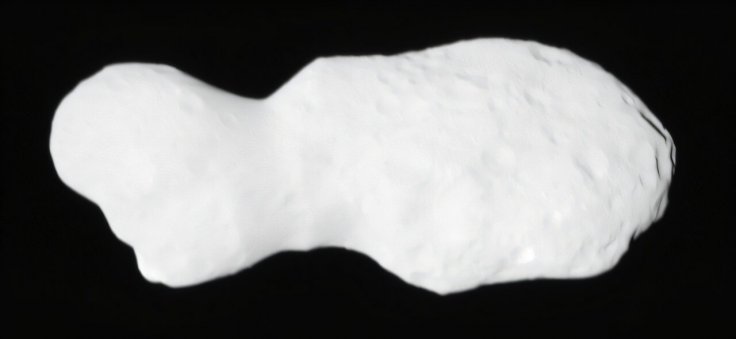
Finally, scientists working on NASA's Lucy mission are completing the process of fine-tuning the data collected by the spacecraft's encounter with Donaldjohanson, an asteroid in the main asteroid belt of our solar system, on April 20. And it's just as peanut shaped as we initially thought.
At a distance of roughly 600 miles (960 kilometers), Lucy's Long Range Reconnaissance Imager captured a picture of Donaldjohansson earlier this year as it swiftly flew by it. The smallest features visible were about 130 feet (40 meters) across, which is an amazing close-up given the size of everything we see in space.
Unfortunately, the Sun's position behind Lucy made the asteroid's finer details less noticeable. Even so, the close visit is crucial because it enables scientists to meticulously examine the surface's details after correcting for brightness.
Hal Levison, Lucy's principal investigator, in an earlier press release about the asteroid, said, "Asteroid Donaldjohanson has strikingly complicated geology".
About 150 million years ago, two smaller objects collided in space, giving Donaldjohansson its lumpy shape. Given that smaller asteroids in the solar system have a similar shape, Donald Johanson's findings may help us comprehend a wide range of other celestial objects.
"As we study the complex structures in detail, they will reveal important information about the building blocks and collisional processes that formed the planets in our Solar System," Levison added.
The Lucy mission's itinerary includes visiting the eight Trojan asteroids that orbit Jupiter in the same orbit as the Sun, and Donaldjohansson is not its primary goal.
However, NASA's Erin Morton said earlier this week that Lucy's Donaldjohanson encounter—as well as the November 2023 flyby of asteroid Dinkinesh—is a great "dress rehearsal" for Lucy as it continues its journey toward the cooler, outer regions of the solar system.
The next significant event for Lucy is scheduled for August 2027, when the spacecraft will begin exploring the Jupiter Trojan asteroids in earnest. Eurybates is a carbonaceous asteroid so large that it has its own satellite, Queta.









